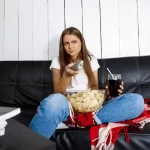Vermouth is an aromatic and fortified wine that has been a key ingredient in many classic cocktails for centuries. From the iconic Martini to the classic Manhattan, vermouth adds depth, complexity, and balance to cocktails. In this article, we’ll explore the history of vermouth, its production, types, and how it contributes to some of the most popular cocktails in the world.
1. Introduction
Cocktails have come a long way since the first mixed drinks were invented in the early 19th century. Today, there are countless cocktail recipes that utilize a wide range of spirits, liqueurs, and mixers. However, there are a few ingredients that remain timeless and essential to the art of mixology, and vermouth is undoubtedly one of them. Whether you prefer your cocktails sweet, dry, or somewhere in between, vermouth is a key ingredient that adds depth and complexity to the flavor profile.
2. What is Vermouth?
Vermouth is a fortified wine that is flavored with various botanicals, such as herbs, spices, and roots. It is typically made from a base of white wine that has been infused with a blend of botanicals and fortified with a neutral spirit, such as brandy. The resulting beverage is then aged in barrels to allow the flavors to meld together and develop complexity.
3. The History of Vermouth
The history of vermouth can be traced back to the late 18th century in Turin, Italy. The first vermouth was produced by a man named Antonio Benedetto Carpano, who infused white wine with a blend of herbs and spices to create a new type of fortified wine. The resulting beverage was a hit with locals, and soon other producers in Turin began making their own versions of vermouth.
By the mid-19th century, vermouth had become popular throughout Europe and had made its way across the Atlantic to the United States. It became a key ingredient in many classic cocktails, including the Martini, Manhattan, and Negroni.
4. Types of Vermouth
There are several different types of vermouth, each with its own flavor profile and intended use. Here are some of the most common types:
Dry Vermouth
Dry vermouth, also known as white vermouth, is the most commonly used type of vermouth in cocktails. It is typically made from a blend of white wine, botanicals, and a neutral spirit. Dry vermouth has a crisp, dry flavor and is often used in drinks such as Martinis and Gibsons.
Sweet Vermouth
Sweet vermouth, also known as red vermouth, is a fortified wine that is infused with a blend of botanicals and sweetened with caramel or sugar. It has a rich, sweet flavor and is often used in cocktails such as the Manhattan and the Negroni.
Blanc Vermouth
Blanc vermouth, also known as bianco vermouth, is a white vermouth that has been sweetened and infused with a blend of botanicals. It has a slightly sweet flavor and is often used in cocktails that call for a white vermouth, such as the Vesper.
Rose Vermouth
Rose vermouth, also known as pink vermouth, is a relatively new type of vermouth that has gained popularity in recent years. It is made by infusing a blend of white and red wines with a selection of botanicals. Rose vermouth has a delicate floral aroma and a slightly fruity flavor that makes it a great addition to cocktails such as the Rose Spritz.
5. How Vermouth is Made
The production of vermouth is a complex and multi-step process that involves the infusion of wine with various botanicals and the addition of a neutral spirit to fortify the beverage. Here is a general overview of the steps involved in making vermouth:
- Select and blend a base wine – The first step in making vermouth is to select a base wine. This can be any type of wine, but it is usually a white wine. The wine is then blended with other wines to create a specific flavor profile.
- Add botanicals – Once the wine has been selected, a blend of botanicals is added to the wine. The botanicals used can vary depending on the type of vermouth being produced, but they typically include herbs, spices, and roots.
- Fortify with spirit – After the botanicals have been added, a neutral spirit, such as brandy, is added to the wine to fortify the beverage. This increases the alcohol content of the vermouth and helps to preserve it.
- Age in barrels – The vermouth is then aged in barrels for a period of time to allow the flavors to meld together and develop complexity.
6. Vermouth in Cocktails
Vermouth is a key ingredient in many classic cocktails and is used to add depth, complexity, and balance to the drink. Here are some of the most popular cocktails that use vermouth:
Martini
The Martini is perhaps the most famous cocktail that uses vermouth. It is made with gin or vodka, dry vermouth, and a garnish of either a lemon twist or olive. The addition of vermouth adds a subtle sweetness and herbal complexity to the drink.
Manhattan
The Manhattan is another classic cocktail that uses vermouth. It is made with rye whiskey, sweet vermouth, and a dash of bitters. The vermouth helps to balance the strong flavor of the rye whiskey and adds a rich, sweet note to the drink.
Negroni
The Negroni is a popular cocktail that is made with gin, sweet vermouth, and Campari. The vermouth adds a sweet and herbal complexity to the drink that helps to balance the bitterness of the Campari.
Boulevardier
The Boulevardier is a twist on the classic Negroni that replaces gin with bourbon. It is made with bourbon, sweet vermouth, and Campari, and the vermouth helps to add depth and complexity to the drink.
7. How to Store Vermouth
Vermouth is a wine-based product and should be treated as such when it comes to storage. Once opened, vermouth should be refrigerated and consumed within a few weeks to ensure that it retains its flavor and aroma. It is also important to store vermouth in a cool, dark place to prevent it from spoiling.
8. Conclusion
Vermouth is a versatile and essential ingredient in the world of cocktails. Whether you prefer your drinks sweet or dry, vermouth adds complexity, depth, and balance to cocktails and has been a key component in many classic recipes for centuries. By understanding the different types of vermouth, how it is made, and how it is used in cocktails, you can elevate your mixology game and create delicious, complex drinks at home.
9. FAQs
- Is vermouth gluten-free?
Vermouth is made from wine and a neutral spirit, which are both gluten-free. However, some brands of vermouth may use ingredients that contain gluten in their production process, such as caramel color. If you have celiac disease or a gluten sensitivity, it is important to read the labels carefully and choose a vermouth that is certified gluten-free. - Can vermouth go bad?
Yes, vermouth can go bad over time. Once opened, it should be stored in the refrigerator and consumed within a few weeks to ensure that it retains its flavor and aroma. If vermouth is left out in the open air or exposed to sunlight for extended periods of time, it can spoil more quickly. - Can vermouth be consumed on its own?
Vermouth is traditionally used as a cocktail ingredient, but it can also be consumed on its own as an aperitif or after-dinner drink. It is typically served chilled and can be enjoyed over ice or with a splash of soda water. - What is the difference between sweet and dry vermouth?
Sweet vermouth is made with caramel or sugar and has a sweet flavor. It is typically used in cocktails that call for a sweet vermouth, such as the Manhattan or Negroni. Dry vermouth, on the other hand, has a crisp and dry flavor and is often used in drinks such as the Martini or Gibson. - What are some other cocktails that use vermouth?
In addition to the Martini, Manhattan, Negroni, and Boulevardier, there are many other cocktails that use vermouth as a key ingredient. Some examples include the Vesper, Rob Roy, and Americano.









